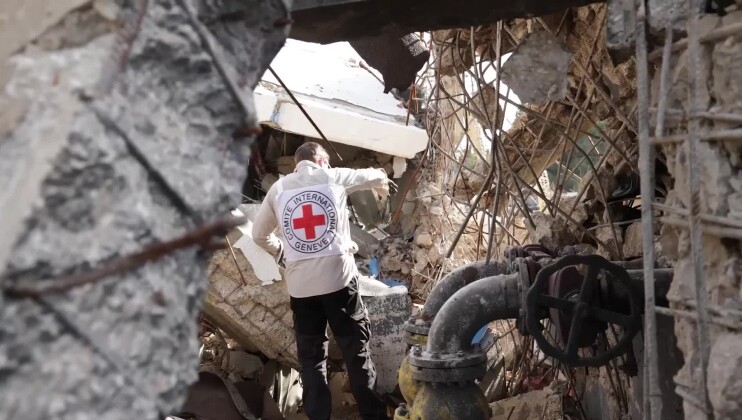Libya: unexploded weapons a further threat to lives
As a result of the recent and ongoing fighting in Libya, unexploded weapons left from the conflict are a major hazard for the country's civilian population. Unexploded ordnance and armoured vehicles, including rockets, shells and mortars, are strewn across public places and residential areas in Misrata, Ajdabiya and Benghazi. The risk for civilians is high.
The ICRC experts in munition clearance arrived in Benghazi 28 April. They started clearing yesterday dangerous devices in areas around Ajdabiya. This is the beginning of a sustained effort to reduce the weapon contamination hazard for the civilian population, which will hopefully include conflict-torn Misrata as well in the near future. The ICRC experts mark the most affected areas before proceeding with the safe removal or deactivation. The work is done in close cooperation with the volunteers of the Libyan Red Crescent Society who are playing an essential role in defining the affected areas.
In Ajdabiya, many families are not able to return to their homes because of the threat posed by the unexploded devices surrounding their houses. In some cases there are even shells inside their houses which did not blow up. There have been as well reports about cases of recent injuries, mainly children in the past few days.
In addition, munitions stored in the Libyan Army bases in Ajdabiya, Benghazi and Tobruk - which were abandoned in early March - and in other areas in the eastern part of the country, are accessible to the local population. To make matters worse, some of the stores exploded, scattering the munitions over vast areas. Finally, because many armoured fighting vehicles, truck-mounted rocket launchers and other military vehicles have been destroyed in the fighting or by air strikes, unexploded ordnance is frequently found around the destroyed vehicles or inside them in unstable condition.
"Since the moment of our arrival to Benghazi in February, the urgency of implementing a clearance programme for the unexploded ordnances was apparent", said Simon Brooks, the Head of ICRC mission in Benghazi. "This is the first time the ICRC implements such a program while military operations are still ongoing. If we do not do it now, many civilians will be in danger and will not be able to quickly return to their homes".
The ICRC has also launched a campaign to help civilians understand the risks such ordnance represents. In cooperation with volunteers from the Libyan Red Crescent, it is organizing sessions, distributing posters and leaflets to alert civilians about the risk they face.
Libya's struggle against explosive devices dates back to the Second World War and to the conflicts with Egypt in 1977 and Chad in 1980-1987. The borders with Egypt, Chad and Tunisia are still littered with anti-personnel and anti-tank mines and other unexploded munitions.
B-Roll and shotlist available to preview and download as MPEG2 file.



